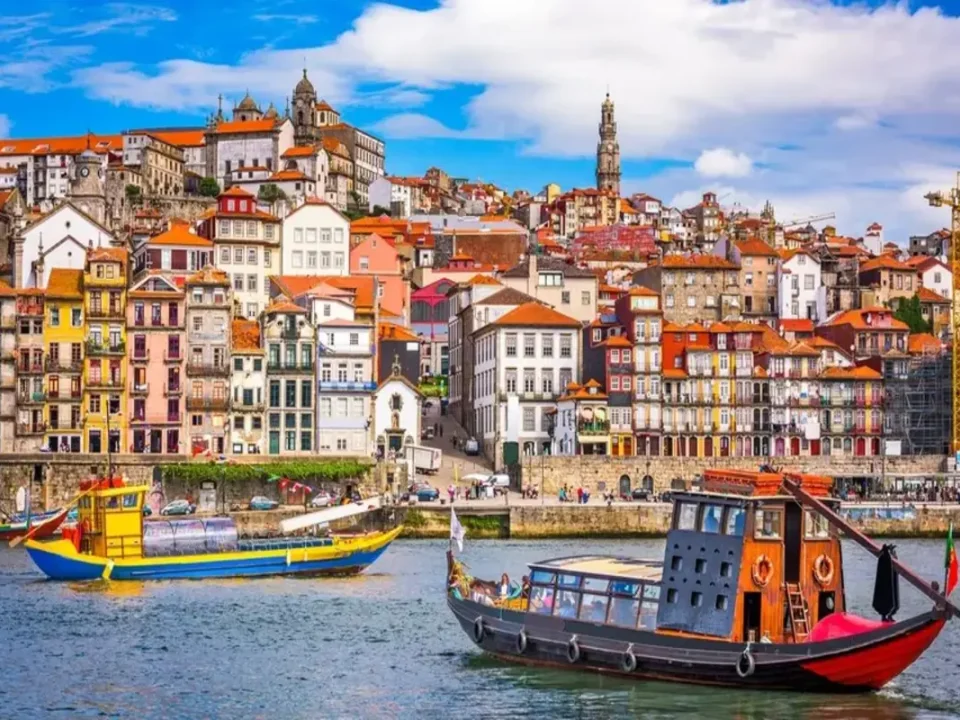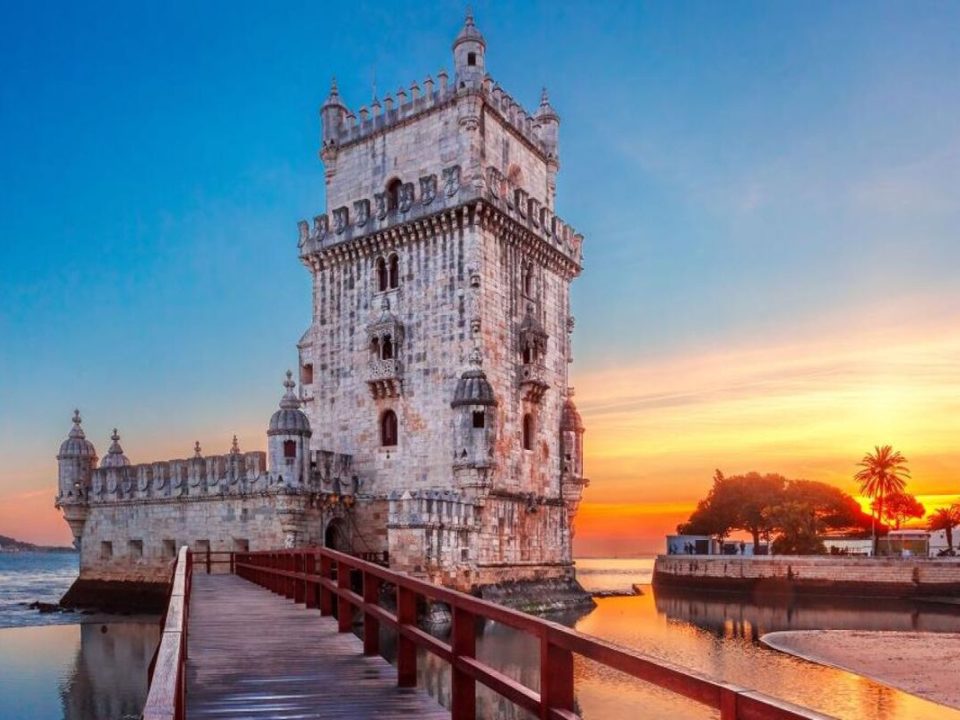Discover the Enchanting Azores Islands: Your Ultimate Guide to Portugal’s Hidden Gem
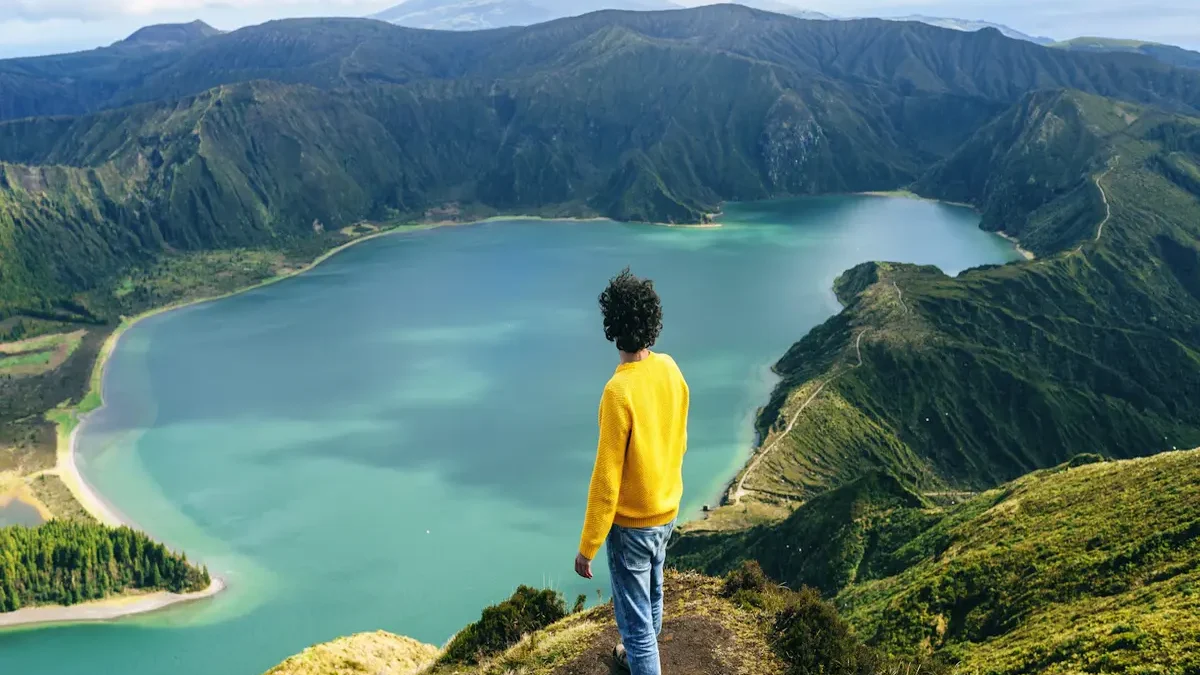
Discover the Enchanting Azores Islands: Your Ultimate Guide to Portugal’s Hidden Gem
Welcome to the Azores Islands, a breathtaking archipelago in the middle of the Atlantic Ocean, known for its stunning landscapes, rich culture, and unique biodiversity. The Azores, an autonomous region of Portugal, offer an extraordinary blend of natural beauty and traditional charm, making them a perfect destination for travelers seeking adventure and tranquility. This comprehensive guide provides everything you need to know for an enriching visit to the Azores Islands, including their history, key attractions, unique features, and practical information for tourists.
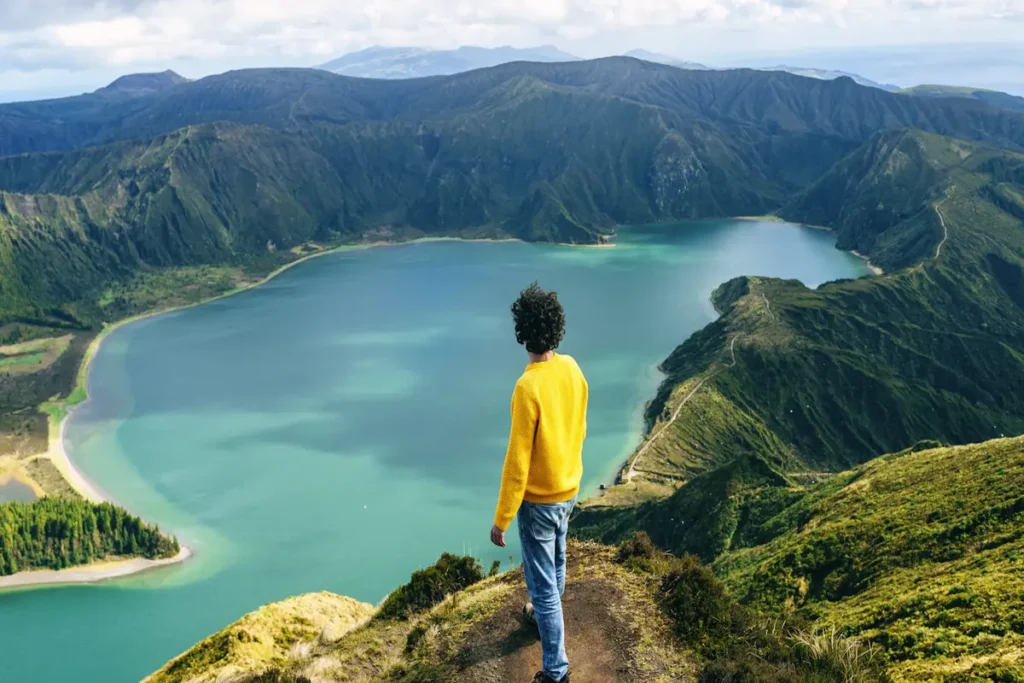
A Glimpse into the History of the Azores Islands
Early Beginnings
The Azores Islands were discovered by Portuguese navigators in the early 15th century, although some evidence suggests that they may have been known to ancient civilizations.
- Discovery: Officially discovered in 1427 by Diogo de Silves, the islands were later colonized by the Portuguese, who brought settlers, livestock, and plants to establish permanent communities.
- Colonization: The islands were gradually populated, starting with Santa Maria and São Miguel, followed by the other islands. The settlers developed agriculture, focusing on wheat, wine, and livestock.
Strategic Importance
Due to their strategic location in the Atlantic, the Azores played a significant role in maritime navigation and military history.
- Naval Base: During the Age of Discovery, the Azores served as a crucial stopover for ships traveling between Europe, Africa, and the Americas.
- World Wars: In both World Wars, the islands were used as strategic bases by the Allies, providing critical support for naval and air operations.
Modern Development
In the 20th century, the Azores transitioned from a primarily agrarian society to a more diverse economy, with a growing emphasis on tourism and services.
- Autonomy: In 1976, the Azores were granted political autonomy within Portugal, allowing for greater local governance and economic development.
- Tourism: Today, the Azores are a popular tourist destination, known for their natural beauty, outdoor activities, and sustainable tourism practices.
Key Attractions of the Azores Islands
São Miguel Island
São Miguel, the largest island in the Azores, offers a diverse range of attractions, from volcanic landscapes to vibrant towns.
- Sete Cidades: Explore the stunning twin lakes of Sete Cidades, located in the caldera of a dormant volcano, with their contrasting blue and green waters.
- Furnas: Visit Furnas, a geothermal wonderland with hot springs, fumaroles, and the unique experience of cooking food in volcanic steam vents.
- Ponta Delgada: Wander through the charming capital, Ponta Delgada, with its historic architecture, bustling markets, and beautiful waterfront.
Terceira Island
Terceira is known for its rich cultural heritage and vibrant festivals, as well as its dramatic landscapes.
- Angra do Heroísmo: Discover the UNESCO World Heritage city of Angra do Heroísmo, with its well-preserved colonial architecture and historic fortifications.
- Algar do Carvão: Explore Algar do Carvão, a remarkable lava tube with a stunning underground chamber and stalactites.
- Festivals: Experience the island’s lively festivals, including the famous “Touradas à Corda,” a unique form of bullfighting.
Pico Island
Pico Island is dominated by the imposing Mount Pico, the highest peak in Portugal, and is renowned for its vineyards and whaling history.
- Mount Pico: Climb Mount Pico for breathtaking views of the surrounding islands and the Atlantic Ocean. The ascent is challenging but rewarding.
- Lajido Vineyards: Visit the UNESCO-listed Lajido Vineyards, where unique volcanic soil produces the island’s distinctive wines.
- Whaling Museum: Learn about the island’s whaling heritage at the Whaling Museum in Lajes do Pico, which showcases the history and culture of Azorean whaling.
Faial Island
Faial Island, also known as the “Blue Island,” is famous for its hydrangea-lined roads and the dramatic Capelinhos Volcano.
- Horta: Explore the charming port town of Horta, a popular stop for transatlantic sailors, known for its colorful marina and the iconic Peter Café Sport.
- Capelinhos Volcano: Visit the Capelinhos Volcano and its Interpretation Center, which provides insight into the island’s volcanic activity and the 1957 eruption.
- Caldeira: Hike around the Caldeira, a massive volcanic crater offering stunning panoramic views and lush vegetation.
São Jorge Island
São Jorge is characterized by its long, narrow shape and dramatic cliffs, offering some of the best hiking and scenic views in the Azores.
- Fajãs: Discover the island’s “fajãs,” flat coastal areas formed by lava flows or landslides, which are perfect for hiking and exploring.
- Topo: Visit the picturesque village of Topo, located at the eastern tip of the island, with its traditional houses and serene atmosphere.
- Cheese: Taste the famous São Jorge cheese, a delicious, spicy cheese that has been produced on the island for centuries.
Unique Features of the Azores Islands
Geothermal Activity
The Azores are known for their geothermal activity, which has created a unique landscape of hot springs, fumaroles, and volcanic craters.
- Hot Springs: Relax in natural hot springs, such as those in Furnas on São Miguel or Carapacho on Graciosa, where warm, mineral-rich waters offer a soothing experience.
- Fumaroles: Witness the bubbling fumaroles and steaming vents in places like Furnas and the Caldeiras da Ribeira Grande, showcasing the islands’ volcanic nature.
- Geothermal Cooking: Try the traditional dish “Cozido das Furnas,” a stew cooked underground using volcanic steam, for a unique culinary experience.
Biodiversity
The Azores are a haven for biodiversity, with a variety of endemic species and rich marine life.
- Flora and Fauna: Explore the diverse flora and fauna of the islands, including endemic plants, birds, and insects that thrive in the unique environment.
- Whale Watching: The Azores are one of the best places in the world for whale watching, with opportunities to see sperm whales, blue whales, and dolphins.
- Marine Reserves: Visit the marine reserves and protected areas, such as the Formigas Islets and the Princess Alice Bank, which are teeming with marine life and ideal for diving and snorkeling.
Cultural Heritage
The Azores have a rich cultural heritage, influenced by Portuguese, Moorish, and maritime traditions.
- Architecture: Discover the traditional Azorean architecture, characterized by whitewashed houses, ornate churches, and basalt stone buildings.
- Festivals: Experience the vibrant festivals and cultural events, such as the Holy Ghost Festivals, which feature processions, feasts, and traditional music and dance.
- Handicrafts: Explore the local handicrafts, including intricate lacework, pottery, and woven goods, which reflect the islands’ cultural heritage and craftsmanship.
Practical Information for Tourists
Getting There
The Azores Islands are accessible by air and sea, with connections from mainland Portugal and international destinations.
- By Air: The main gateway to the Azores is João Paulo II Airport (PDL) in Ponta Delgada, São Miguel, with flights from Lisbon, Porto, and other European cities. Regional flights connect the islands.
- By Sea: Ferry services operate between the islands, providing a scenic and convenient way to travel within the archipelago.
Getting Around
Traveling between and within the Azores Islands is relatively easy, with a variety of transportation options.
- Ferries: Regular ferry services connect the islands, with more frequent services in the summer months. Companies like Atlanticoline provide inter-island connections.
- Flights: Regional airlines, such as SATA Air Açores, offer flights between the islands, making it easy to explore multiple destinations during your visit.
- Car Rentals: Renting a car is a convenient way to explore the islands at your own pace, with rental agencies available at airports and major towns.
- Public Transport: Buses and taxis are available on the larger islands, providing an affordable option for getting around.

Tips for an Enjoyable Visit
Plan Your Visit
To make the most of your time in the Azores, it’s helpful to plan ahead and prioritize the attractions and activities that interest you the most.
- Best Time to Visit: The best time to visit the Azores is from May to October, when the weather is warm and stable, and outdoor activities are in full swing.
- Accommodation: Book your accommodation in advance, especially during peak tourist seasons, to ensure availability and the best rates.
Capture the Moment
The Azores offer numerous opportunities for stunning photographs. Here are some tips to capture the best shots:
- Scenic Views: Take advantage of the islands’ scenic viewpoints, such as Miradouro da Vista do Rei on São Miguel or Miradouro da Fajã dos Cubres on São Jorge.
- Sunrise and Sunset: Capture the beauty of the islands during sunrise and sunset, when the light is soft and golden, highlighting the natural landscapes.
- Wildlife: Bring a zoom lens for capturing the diverse wildlife, including whales, dolphins, and birds, in their natural habitats.
Must-See Highlights at the Azores Islands
Sete Cidades
Sete Cidades is one of the most iconic and beautiful locations in the Azores, known for its twin lakes and volcanic landscapes.
- Twin Lakes: The twin lakes, Lagoa Azul and Lagoa Verde, are situated in the caldera of an ancient volcano, offering breathtaking views and hiking opportunities.
- Vista do Rei: Visit the Vista do Rei viewpoint for a panoramic view of the lakes and the surrounding caldera, providing one of the most photographed scenes in the Azores.
- Hiking Trails: Explore the various hiking trails around Sete Cidades, which take you through lush forests, pastures, and along the crater rim.
Furnas
Furnas is a geothermal wonderland located on São Miguel Island, offering hot springs, fumaroles, and unique cultural experiences.
- Caldeiras das Furnas: Visit the Caldeiras das Furnas, where you can see bubbling fumaroles and steam vents, and experience the geothermal activity up close.
- Terra Nostra Park: Relax in the thermal baths of Terra Nostra Park, a beautiful botanical garden with a large geothermal pool surrounded by lush vegetation.
- Cozido das Furnas: Try the traditional “Cozido das Furnas,” a hearty stew cooked underground using volcanic steam, for a unique culinary experience.
Mount Pico
Mount Pico, the highest peak in Portugal, is a must-visit destination for adventure seekers and nature enthusiasts.
- Climbing Mount Pico: Embark on the challenging climb to the summit of Mount Pico, where you’ll be rewarded with stunning panoramic views of the Azores archipelago.
- Lajido Vineyards: Explore the UNESCO-listed Lajido Vineyards, where unique volcanic soil produces the island’s distinctive wines.
- Whaling Heritage: Learn about Pico’s whaling heritage at the Whaling Museum in Lajes do Pico, which showcases the history and culture of Azorean whaling.
Horta
Horta, located on Faial Island, is a charming port town known for its colorful marina and vibrant sailing culture.
- Horta Marina: Visit Horta Marina, a popular stop for transatlantic sailors, where you can see the colorful murals and paintings left by visiting yachts.
- Peter Café Sport: Stop by Peter Café Sport, an iconic bar and meeting place for sailors, known for its friendly atmosphere and delicious gin and tonics.
- Caldeira: Hike around the Caldeira, a massive volcanic crater offering stunning panoramic views and lush vegetation.
Dining and Shopping in the Azores Islands
Dining Options
The Azores offer a variety of dining options, featuring fresh local ingredients and traditional Portuguese cuisine.
- Seafood: Enjoy fresh seafood dishes, such as grilled octopus, fish stew, and lapas (limpets), which are a staple of Azorean cuisine.
- Cozido das Furnas: Try the unique “Cozido das Furnas,” a traditional stew cooked underground using volcanic steam, for a one-of-a-kind culinary experience.
- Queijadas: Indulge in sweet treats like Queijadas da Vila, a delicious cheese pastry that originated on the island of Terceira.
Shopping for Souvenirs
The Azores offer a variety of unique souvenirs that reflect the islands’ culture and craftsmanship.
- Local Crafts: Look for handmade crafts, including pottery, lacework, and woven goods, which are created by local artisans.
- Azorean Wine: Purchase a bottle of Azorean wine, such as the unique Verdelho wine from Pico Island, as a tasty reminder of your visit.
- Cheese: Take home a wheel of São Jorge cheese, a spicy and flavorful cheese that has been produced on the island for centuries.
Practical Tips for Visitors
Best Time to Visit
The best time to visit the Azores is from May to October, when the weather is warm and stable, and outdoor activities are in full swing.
- Peak Season: The peak tourist season is during the summer months of July and August, when the islands are busiest, and most festivals and events take place.
- Off-Peak Season: Visiting during the shoulder seasons of May-June and September-October offers a more relaxed experience, with fewer crowds and pleasant weather.
Guided Tours and Excursions
To enhance your visit, consider joining guided tours and excursions that offer deeper insights into the islands’ natural and cultural wonders.
- Whale Watching Tours: Join a whale watching tour for a chance to see some of the world’s largest and most magnificent marine mammals in their natural habitat.
- Hiking Tours: Explore the islands’ scenic trails with guided hiking tours that provide information about the local flora, fauna, and geology.
- Cultural Tours: Participate in cultural tours that visit historic sites, local markets, and traditional villages, offering a deeper understanding of Azorean culture and heritage.
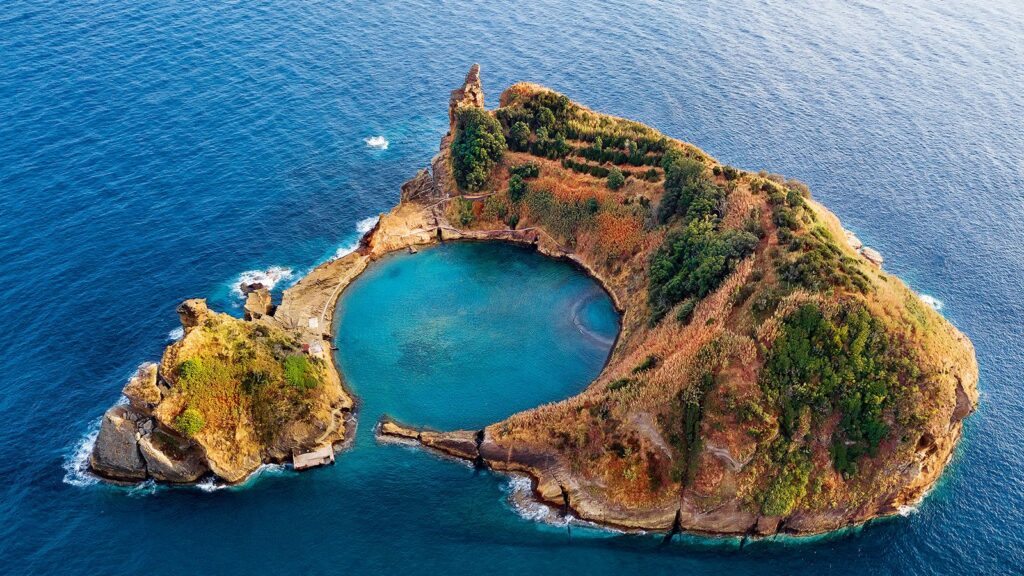
Conclusion
The Azores Islands stand as a testament to the natural beauty and cultural richness of Portugal, offering visitors an unparalleled journey through stunning landscapes, vibrant culture, and unique biodiversity. From the awe-inspiring Mount Pico and the serene Sacred Lake to the vibrant festivals and traditional cuisine, the Azores provide an unforgettable experience for all who visit. Plan your trip to the Azores Islands and immerse yourself in the beauty, history, and mystique of this enchanting archipelago. Embrace the opportunity to explore, discover, and create lasting memories in this hidden gem of the Atlantic.

